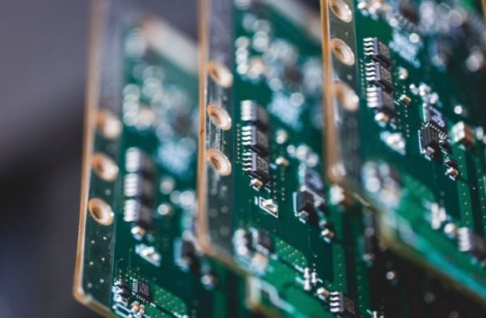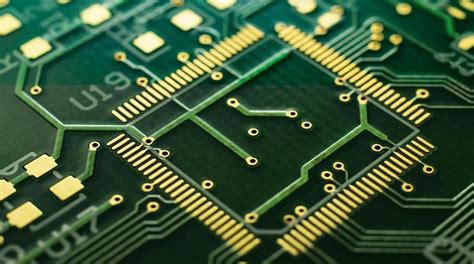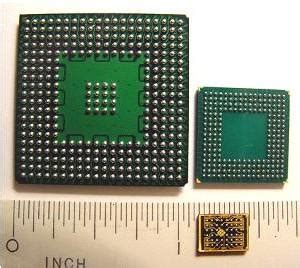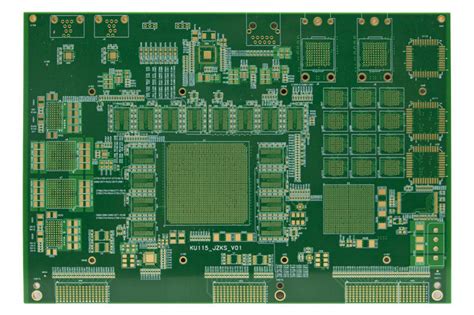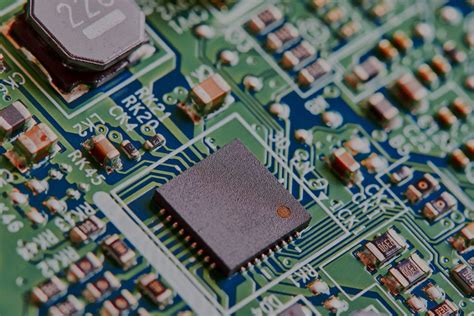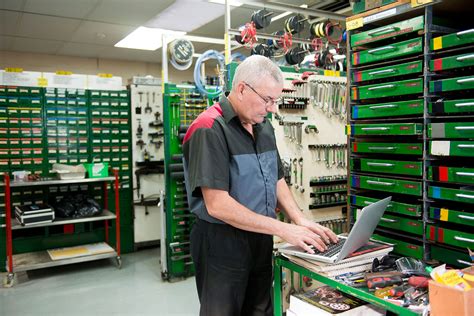The Rapid Development of the PCB Industry: Key Driving Factors
Introduction
The printed circuit board (PCB) industry has experienced remarkable growth over the past few decades, becoming a cornerstone of modern electronics manufacturing. From smartphones and computers to automotive systems and medical devices, PCBs form the essential foundation for nearly all electronic products. This explosive growth raises an important question: What factors have contributed to the PCB industry’s rapid development? This paper examines the primary drivers behind the PCB industry’s expansion, including technological advancements, increasing demand for electronic devices, globalization of supply chains, environmental regulations, and emerging applications in new industries.
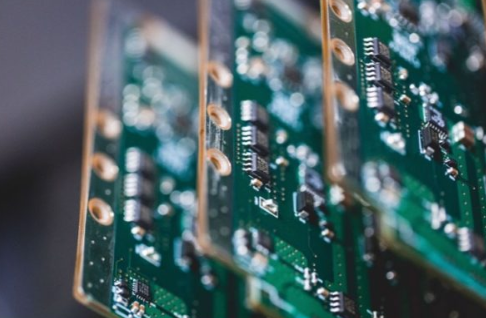
Technological Advancements
One of the most significant factors propelling the PCB industry forward has been the continuous advancement of manufacturing technologies and materials.
Miniaturization and High-Density Interconnect (HDI)
The push for smaller, more powerful electronic devices has driven the development of high-density interconnect (HDI) PCBs. These advanced boards feature finer lines and spaces, smaller vias, and higher connection pad densities than conventional PCBs. The implementation of HDI technology has allowed for:
- Reduced PCB size while maintaining or increasing functionality
- Improved electrical performance through shorter signal paths
- Enhanced reliability with advanced via structures like microvias and buried vias
- Greater design flexibility for complex electronic products
Advanced Materials
The introduction of new substrate materials has significantly expanded PCB capabilities:
- High-frequency laminates for 5G and RF applications
- Flexible and rigid-flex materials for wearable devices
- High-temperature substrates for automotive and industrial uses
- Improved thermal management materials for power electronics
Manufacturing Innovations
Modern PCB fabrication has benefited from numerous technological improvements:
- Automated optical inspection (AOI) systems for quality control
- Laser drilling for precise microvia formation
- Direct imaging systems for high-resolution patterning
- Advanced plating techniques for uniform copper deposition
- Computer-aided design (CAD) and manufacturing (CAM) software
These technological advancements have not only improved PCB performance and reliability but also reduced production costs through increased yields and manufacturing efficiency.
Growing Demand for Electronic Devices
The proliferation of electronic devices across all aspects of modern life has created an enormous and continuously expanding market for PCBs.
Consumer Electronics Boom
The consumer electronics sector represents the largest market for PCBs, driven by:
- Smartphones and tablets requiring increasingly sophisticated multilayer boards
- Portable devices demanding flexible and rigid-flex PCBs
- Smart home products integrating connectivity and sensors
- Gaming systems with high-performance computing requirements
The annual smartphone market alone, exceeding 1 billion units, creates massive demand for compact, high-functionality PCBs.
Computing and Data Infrastructure
The digital transformation has led to substantial growth in:
- Cloud computing and data center equipment
- Enterprise servers and storage systems
- Networking equipment for telecommunications
- High-performance computing applications
These sectors require specialized PCBs capable of handling high speeds, thermal loads, and signal integrity challenges.
Automotive Electronics
Modern vehicles have become increasingly electronic, incorporating:
- Advanced driver assistance systems (ADAS)
- Infotainment and connectivity solutions
- Electric vehicle power electronics
- Sensor networks for autonomous driving
The automotive sector has grown from using simple PCBs for basic functions to requiring sophisticated boards for safety-critical applications.
Industrial and Medical Electronics
Other significant growth areas include:
- Industrial automation and IoT devices
- Medical diagnostic and monitoring equipment
- Aerospace and defense electronics
- Renewable energy systems
This diversification of applications has created new opportunities and requirements for PCB manufacturers.

Globalization and Supply Chain Evolution
The PCB industry has benefited from and contributed to the globalization of electronics manufacturing.
Regional Specialization
The industry has developed distinct regional strengths:
- China: Dominates mass production of standard PCBs
- Taiwan: Leads in advanced technology and HDI boards
- Japan and South Korea: Specialize in high-end materials and substrates
- North America and Europe: Focus on quick-turn prototypes and specialized applications
This specialization has created an efficient global supply chain where manufacturers can leverage different regions’ strengths.
Economies of Scale
The concentration of PCB production in Asia has led to:
- Significant cost reductions through mass production
- Development of extensive supplier networks
- Improved manufacturing expertise through focused investment
- Faster technology diffusion within industrial clusters
Supply Chain Integration
Close collaboration between PCB manufacturers and their customers has resulted in:
- Better design for manufacturability (DFM) practices
- Faster prototyping and product development cycles
- Improved quality control throughout the supply chain
- More responsive production to market demands
Environmental Regulations and Sustainability
Environmental considerations have shaped PCB industry development in multiple ways.
RoHS and Hazardous Substance Restrictions
The Restriction of Hazardous Substances (RoHS) directive and similar regulations have:
- Driven the elimination of lead and other hazardous materials
- Spurred development of alternative surface finishes
- Encouraged innovation in environmentally friendly manufacturing processes
- Created standards for global compliance
Waste Reduction and Recycling
Increasing focus on sustainability has led to:
- Improved production efficiency reducing material waste
- Development of recycling processes for copper and other materials
- Water conservation and treatment initiatives
- Energy efficiency improvements in manufacturing
Green PCB Initiatives
The industry has responded with various eco-friendly approaches:
- Halogen-free laminates
- Lead-free soldering processes
- Reduced chemical usage in production
- Sustainable packaging solutions
These environmental initiatives have not only addressed regulatory requirements but also created competitive advantages for proactive manufacturers.
Emerging Applications and Future Technologies
New technological frontiers continue to create opportunities for PCB industry growth.
5G Telecommunications
The rollout of 5G networks requires:
- High-frequency PCBs for base stations
- Low-loss materials for signal integrity
- Advanced packaging for RF components
- Denser interconnects for processing power
Internet of Things (IoT)
The proliferation of connected devices demands:
- Small-form-factor PCBs for sensors
- Flexible circuits for wearable devices
- Low-power designs for battery-operated products
- Cost-effective solutions for mass deployment
Automotive Innovation
Future vehicle technologies will need:
- High-reliability boards for autonomous systems
- Power electronics for electric vehicles
- Advanced packaging for space-constrained applications
- Robust designs for harsh environments
Artificial Intelligence and Edge Computing
These cutting-edge applications require:
- High-speed PCBs for data processing
- Thermal management solutions
- Heterogeneous integration approaches
- Specialized substrate technologies
Conclusion
The rapid development of the PCB industry results from a convergence of technological, economic, and market factors. Continuous innovation in materials and manufacturing processes has enabled PCBs to meet the ever-increasing demands of electronic products. Explosive growth across multiple sectors—from consumer electronics to automotive and industrial applications—has created sustained demand. Globalization has optimized production and supply chains, while environmental regulations have driven positive changes in manufacturing practices. Looking ahead, emerging technologies like 5G, IoT, and AI promise to fuel further growth and innovation in the PCB industry.
As the foundation of modern electronics, the PCB industry’s development mirrors the broader technological progress of society. Its ability to adapt to new requirements while improving performance and reducing costs ensures that PCBs will remain essential components in our increasingly digital world. The industry’s future success will depend on maintaining this adaptability while addressing challenges such as supply chain resilience, environmental sustainability, and the need for continuous technological advancement.

